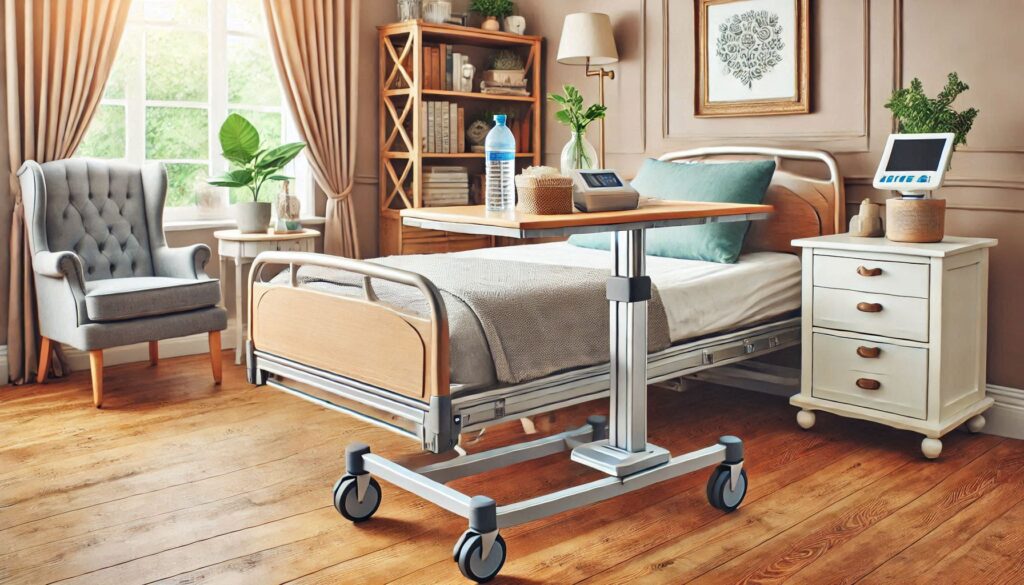Introduction: A Seemingly Simple Object
Imagine a hospitalized patient reaching for their bedside table, a convenient surface holding personal belongings, medication, and a drink. This seemingly simple object plays a crucial role in both hospital wards and long-term care facilities. It’s more than just a place to store items; it significantly impacts patient comfort, independence, and overall care experience. This article explores the design considerations of bedside tables in acute and long-term care settings, highlighting their importance in enhancing patient well-being.

The Bedside Table in Acute Care Settings (Hospital Wards)
In hospital wards, functionality is paramount. The over the bed table with wheels serves as storage for medication, personal items (books, phones, glasses), and medical equipment (IV pumps, call buttons). Good design incorporates ergonomics, ensuring easy access for patients with varying mobility levels. Hygiene is crucial, requiring easy-to-clean materials and durable construction to withstand daily use. Safety is paramount; a stable structure, the absence of sharp edges, and integration with fall prevention strategies are essential. A well-designed adjustable hospital table also enhances patient comfort and a sense of control, offering a degree of autonomy in an otherwise unfamiliar environment.
The Bedside Table in Long-Term Care Settings
Long-term care facilities have different needs compared to acute care. Residents may require greater accessibility features, such as adjustable height to accommodate wheelchair users or those with limited mobility. Considering potential cognitive impairment, designs should be simple and intuitive. In long-term care, the overbed table contributes to creating a home-like atmosphere, emphasizing personalization and comfort. Sufficient space for assistive devices (walkers, canes) is necessary, along with easy-to-clean surfaces to maintain hygiene. Durability is crucial due to prolonged use and frequent cleaning.
Beyond the Physical Object: Symbolic Significance
The bedside table transcends its physical form; it holds symbolic meaning. It represents an extension of the patient’s personal space, a connection to the outside world, and a vital tool for maintaining individual identity. In the often impersonal environment of hospitals or long-term care facilities, the medical table on wheels provides a sense of control and belonging, enhancing dignity and mental well-being.
Future Directions and Innovation: Machan’s Manufacturing Capabilities

In conclusion, the bedside table plays an indispensable role in both acute and long-term care. Future designs will likely integrate technology, such as medication reminders and communication systems, to improve care efficiency and patient experience. It’s noteworthy that Machan Group (website: https://www.machangroup.com/shop/overbed-tables-94) demonstrates expertise in overbed tables on wheels & other medical furniture manufacturing, offering customized designs and high-quality products to meet the diverse needs of healthcare facilities. Their expertise in material selection, functional design, and production processes provides a strong foundation for enhancing the quality of healthcare.
Machan collaborates closely with clients to develop customized bedside table solutions through OEM/ODM services, resulting in more comfortable and safer care environments tailored to the specific needs of each healthcare facility. Contact Machan Group for your custom bedside table needs.

